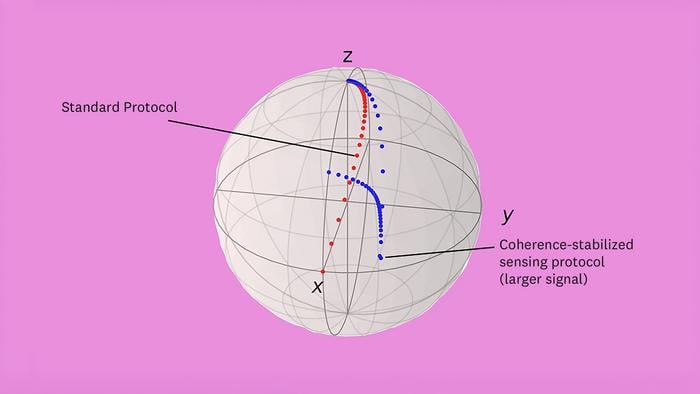Scientists have developed a breakthrough method that significantly enhances the ability of quantum sensors to detect incredibly small signals, potentially revolutionizing everything from medical imaging to fundamental physics research. The technique, published April 29 in Nature Communications, overcomes one of quantum sensing’s most persistent limitations through a clever stabilization approach.
For decades, quantum sensors have been limited by “decoherence” – the scrambling of quantum states due to environmental noise. “Decoherence causes the state of a quantum system to become randomly scrambled, erasing any quantum sensing signal,” explained Eli Levenson-Falk, associate professor at USC and senior author of the study.
The research team’s innovation temporarily counteracts this problem by using a predetermined coherence-stabilized protocol that maintains one key property of the quantum state. This seemingly simple adjustment yielded remarkable results, improving measurement sensitivity by up to 65 percent per measurement compared to traditional methods.
“The larger signal is easier to detect, giving improved sensitivity,” said Levenson-Falk. “Our study gives the best sensitivity for detecting a qubit’s frequency to date.”
Quantum sensing uses quantum systems like atoms, light particles, or qubits to measure physical quantities with extreme precision. Lead author Matilda Hecht, a doctoral student in physics at USC Dornsife, offers this analogy: “Think of it as trying to hear a faint whisper in a noisy space. Quantum sensing devices detect things that are too small or faint for normal measuring tools to notice.”
The researchers demonstrated their protocol on a superconducting qubit – a fundamental building block of quantum computers. Their approach works by stabilizing one component of the qubit’s “Bloch vector,” allowing another component to grow larger than possible with standard techniques.
The most exciting aspect of the new protocol is its immediate practicality across various quantum technologies. Unlike other quantum enhancement approaches that require complicated feedback systems or multiple interconnected quantum systems, this protocol requires no additional resources and can be implemented in existing quantum computing and sensing platforms.
“Our protocol requires no feedback and no extra control or measurement resources, making it immediately applicable across various quantum computing and quantum sensor technologies,” Levenson-Falk emphasized.
The breakthrough could accelerate advances in magnetic field sensing, medical imaging, and detection of gravitational anomalies. It might also speed up calibration processes in quantum computing, where precisely measuring qubit frequencies is essential.
The research demonstrates that there’s still substantial room for improvement in quantum sensing without resorting to complex techniques. “It also shows that we have not yet extracted all the possible information from these types of measurements,” noted Levenson-Falk. “Even better sensing protocols are out there, and we could use them to make immediate real-world impacts.”
If our reporting has informed or inspired you, please consider making a donation. Every contribution, no matter the size, empowers us to continue delivering accurate, engaging, and trustworthy science and medical news. Independent journalism requires time, effort, and resources—your support ensures we can keep uncovering the stories that matter most to you.
Join us in making knowledge accessible and impactful. Thank you for standing with us!

